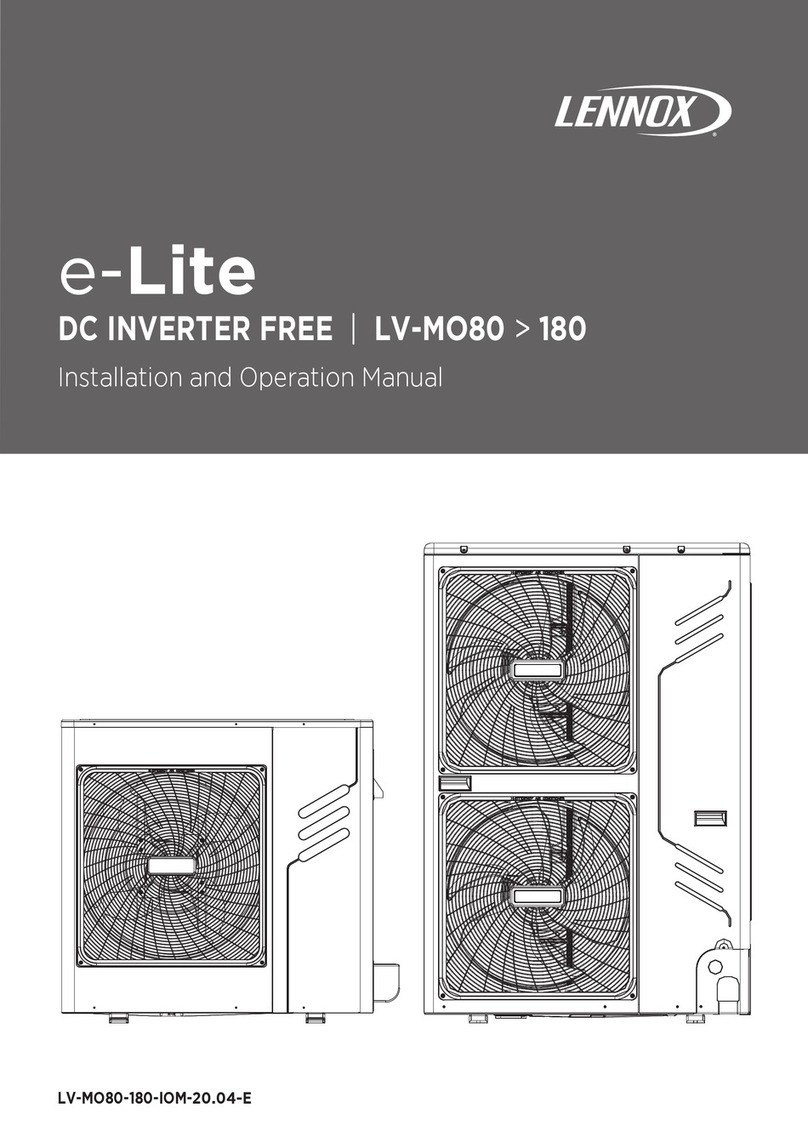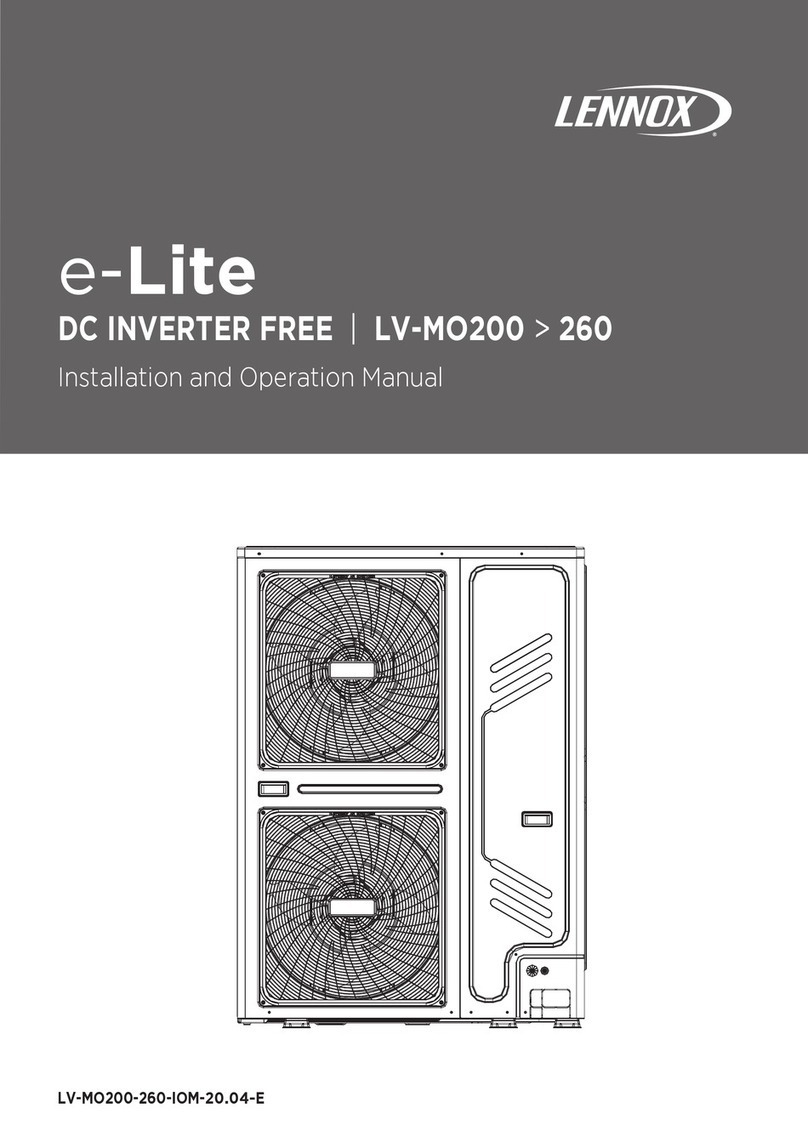
Page 5
Therefore, this system can be installed on a distribution
panel rated for 100 amp or more as long as the HVAC
breaker is positioned at the opposite end from the main
breaker.
For a residence with multiple outdoor units, multiply the
minimum main breaker size by the number of units. For
example: two outdoor units using solar power would need a
200 amp distribution panel.
LOCAL JURISDICTION AND CODE REQUIREMENTS
IMPORTANT
It is advisable to meet with the local inspection department
to find out what requirements exist for solar PV
installations. Local jurisdictions may require electrical,
mechanical and structural inspections to be done.
Grounding of the PV array is important because it is subject
to being struck by lightning. The grounding requirements for
PV AC solar arrays are more flexible than DC solar arrays;
however, check with the authority having jurisdiction over
local area requirements.
DThe AC output of the microinverters is grounded along
with the utility power to HVAC unit.
DSolar PV array must be grounded according to NEC
Article 690 Section V and all applicable local codes.
Figure 4. Grounding
PV MODULE ROOF MOUNTING AND STRUCTURE
REQUIREMENTS
The authority having jurisdiction may want some information
about how the solar modules will be attached to the roof. To
satisfy minimal structural requirements there are two design
rules that usually dictate the minimum requirements:
1. The maximum span of the modules between roof
attachments should be no greater than 48”. These roof
attachments are located on both the top and bottom of
the single row array.
2. The second rule requires that modules which overhang
the last roof attachment in a row may overhang NO
MORE than a maximum of 16” from that roof
attachment.
IMPORTANT
Before finalizing your roof drawing, check with your local
building department to identify any unique wind and snow
load requirements that pertain to your jurisdiction. A
combination of shortening the maximum span between
roof attachments and increasing the length of your lag
bolts will enhance the wind load rating.
WARNING
The AC Solar Module System must be installed on a
fire-resistant roof covering rated for the application. The
minimum mechanical means (attachment points) are
offered in the diagrams provided in this guide. Note that the
specific number of attachment points should be
appropriate to the roof type, local building code, and wind,
snow and seismic loading conditions as defined by the
permitting jurisdiction.
Figure 5. Roof Illustration
WIND LOADING
The system designer must determine the appropriate
number of roof attachment points to ensure the solar
modules remain attached to the roof under (locally specified)
severe wind conditions. There is an excellent article about
PV roof mounting considerations, including wind loading and
structural mounting details in the February / March 2010
issue of SolarPro magazine. Regarding calculating wind
load, the article states:
“This calculation is unnecessary for a typical residential
PV system mounted on a sloped roof with standard
racking materials. In these situations, the racking
system and building structure can easily handle the wind
loads imposed. For particularly windy regions, tall
buildings, or non-standard roof framing, however, the
system designer should perform these calculations to
ensure the structural integrity of the system.”
The article goes on to say that there is a wind load calculation
procedure in development by the Solar America Board for
Codes and Standards (Solar ABCs). Until this procedure has
been finalized, the article recommends using the procedure
outlined in Chapter 6 of ASCE/SEI 7-05. It is a wind load
calculation procedure for components and cladding. The
article provides an explanation of the steps involved. Once
the wind loads are estimated, standard civil engineering
procedures are used to design construction. A useful





























